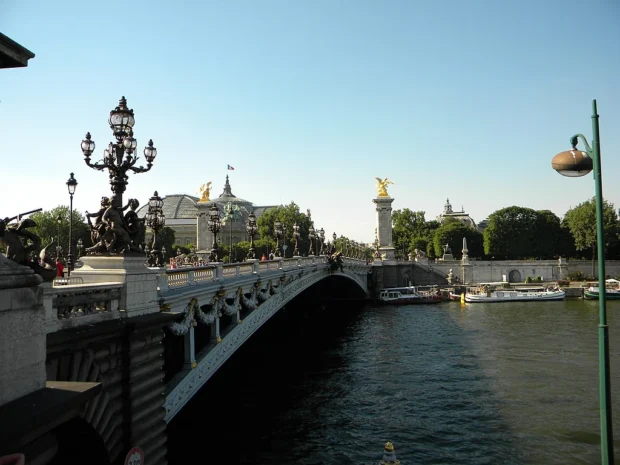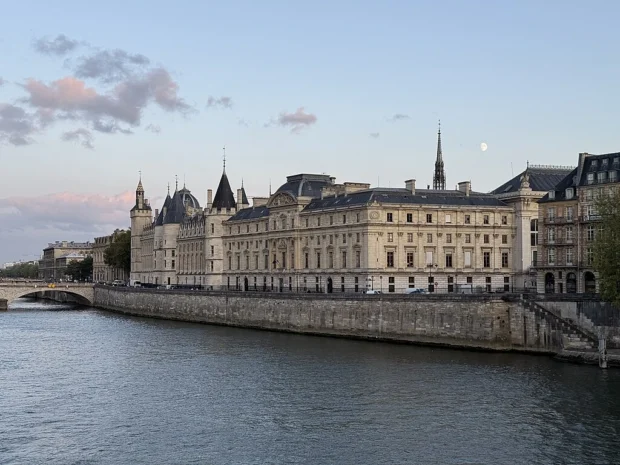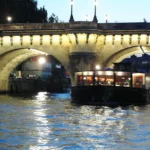Paris, the city known for its art, history, and cafés, opens more stories than just those on postcards. Walking through this capital, one feels a rhythm between ancient stones and the chatter of daily life. From the first steps near wide boulevards to narrow alleys flickering with light, Paris invites quiet exploration.
Table of Contents

Many visitors dream of the Eiffel Tower or the Louvre, places famous worldwide. Yet, the true pulse of Paris hides beyond these landmarks-the quiet corners, small markets, and local habits that shape a metropolis rich in culture and character.

Unseen Corners and Well-Loved Places
Start at the Eiffel Tower, not just for the view but to watch Parisians gathered on the lawns below. The fields are alive with picnic blankets, couples, and street musicians-far from the hurried crowd atop the monument. It shows a different Paris: relaxed and communal.
Near the heart of the city, the iconic Notre-Dame Cathedral offers majestic Gothic architecture and timeless stories, a worthy next stop on your Paris journey.

Nearby, wander over to the Champ de Mars, where every sunset seems choreographed in soft colors. Notice the quiet cafés lining the streets here; many offer small plates of cheese and wine, perfect for late afternoon pauses. Ask for a glass of “vin rouge” to savor local flavors and maybe catch a conversation with a neighbor.

Further afoot, the Louvre Museum dominates the historical axis of the city. Though packed inside, the building itself is a masterpiece. Step outside to the courtyard and watch the glass pyramid reflecting in the fountain pools-a meeting place that balances old stone and modern glass artfully. Avoid the crowds by visiting the less-known wings or early mornings if you go inside.

Places to Stay and Neighborhood Vibes
Where you rest your head influences how you feel Paris. The 5th arrondissement, near the Latin Quarter, pulses with student energy and ancient streets weaving history and lively chatter. It’s ideal for travelers who like to stroll to bookshops and literary cafés, places where pages turn slowly and ideas flow.

For a different mood, try the Marais district. Here, old mansions house art galleries, and cobbled lanes hide worldly smells from different cultures. Staying nearby means stepping out into a world of small artisan shops, falafel stands, and quiet squares with benches shaded by chestnut trees.
After enjoying Paris’s famous sights, consider experiencing Bruges’s Market Square to feel a lively medieval atmosphere in a different European city.

Both these areas link well to transportation, making it easy to go from quiet mornings among books to afternoon visits at grand landmarks. The metro, with lines stretching beneath the city like a web, lets you travel quickly and cheaply. From Charles de Gaulle airport, the RER B train line whisks you nearly direct to the city center, giving a glimpse of the city waking up through tinted windows.

Food Stories Told by District
French cuisine is famous, but Paris food culture is about daily joy too. In the 11th arrondissement, a neighborhood with strong local feels, small bistros serve dishes like duck confit alongside crisp salads. One place I sat at had locals pouring over morning news and sharing pastry crumbs with chatting children-a scene as delightful as the meal.

Step to the Rue Cler market near the Eiffel Tower area for fresh produce vendors and cheese counters that feel tailor-made for food lovers. Try a fresh baguette + creamy Brie, a simple pairing made perfect by the market atmosphere. Early risers shop here, greeted by bright colors and fresh scents hanging in the air.

If sweets tempt you, do not miss the area near Saint-Germain-des-Prés, home to cafés once visited by writers like Sartre and Hemingway. Here, learning to sip rich coffee slowly while nibbling a delicate éclair adds texture to any day.

Practice the Parisian Way Kindly
Inviting as it is, Paris requires respectful steps. When entering shops or cafés, a soft “bonjour” goes a long way-it’s as much a greeting as a polite key to easier service. Keep voices gentle in public spaces. It surprises many to find how much Parisians value calm in their busy routines.

Tipping is polite but simple. Rounding up or leaving a small percentage on bills shows appreciation without fuss. Lastly, do not expect to dine loudly late at night; restaurants often close early, especially outside busy tourist areas.

Subtle Culture and Everyday Rituals
Parisians have strong café traditions-these are gathering points, not just places to drink coffee. Sitting at a corner table, a person watches life flow by slowly and exchanges greetings with the regular barista, who already knows their order. This café culture is also where city stories start or slow down, giving each day a small pause.

On Sundays, many find joy in walking along the Seine, where booksellers open second-hand stalls. Here, pages smell of time and distant places, inviting moments of quiet reflection amid the city’s pulse.

What Makes Paris Photogenic and Alive
Everywhere in Paris there is a good photo waiting. The play of light on stone buildings is soft in the morning, sharp by afternoon. Small public gardens like Place des Vosges offer greenery surrounded by classic arches and red brick, perfect to frame human stories and architecture.
Sometimes, the city feels like telling its own story-a tale in windows, doorways, or a whisper of history in old walls. Even simple cobblestone pavements have a texture worth touching and remembering. Carry your camera or phone ready, but also simply watch and listen; Paris speaks loudly in silences.
In the end, walking through Paris feels like stepping into a living book with every corner turning a page. The city’s balance of great art, everyday life, and small surprises makes its spirit inviting and endlessly rich to those who linger.

Lover of cities, local cafés, and historic streets, exploring urban life with attention to architecture and culinary delights.
- Paris – Eiffelturm und Marsfeld2 by Wladyslaw (Taxiarchos228) on Wikimedia Commons – cc by 3.0
- Eiffel Tower Paris June 2010 by King of Hearts on Wikimedia Commons – cc by-sa 4.0
- Louvre Museum,Paris,France by Hrutvija on Wikimedia Commons – cc by-sa 3.0
- Notre-Dame de Paris 2013-07-24 by P e z i on Wikimedia Commons – cc by-sa 3.0
- Basilique du Sacré-Cœur.001 – Montmartre by Fernando Losada Rodríguez on Wikimedia Commons – cc by-sa 4.0
- Musée d'Orsay in July 2022 by DiscoA340 on Wikimedia Commons – cc by-sa 4.0
- Arc de Triomphe de l'Étoile in July 2011 by Alvesgaspar on Wikimedia Commons – cc by-sa 3.0
- Palace of Versailles (28272465371) by Gary Todd from Xinzheng, China on Wikimedia Commons – cc0
- 2024 04 Sainte-Chapelle Paris 1617 by Mariordo on Wikimedia Commons – cc by-sa 4.0
- Centre Pompidou – panoramio – mayatomo by mayatomo on Wikimedia Commons – cc by-sa 3.0
- Jardin du Luxembourg by Rdevany at English Wikipedia on Wikimedia Commons – cc by-sa 3.0
- Pavillon de Flore from the Tuileries garden, Paris 2 August 2015 002 by Norio NAKAYAMA from saitama, japan on Wikimedia Commons – cc by-sa 2.0
- L'escalier de droite menant à la Basilique de Montmartre – GT 03 – 2024 by Terragio67 on Wikimedia Commons – cc by-sa 4.0
- Paris, France. Pont Alexandre III (2) (PA00088798) by Britchi Mirela on Wikimedia Commons – cc by-sa 4.0
- Conciergerie – Paris I (FR75) – 2025-09-03 – 4 by Chabe01 on Wikimedia Commons – cc by-sa 4.0
- Avenue des Champs-Élysées, Paris 3 October 2010 by SoWhat on Wikimedia Commons – cc by-sa 2.0
